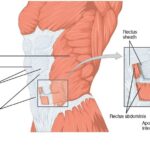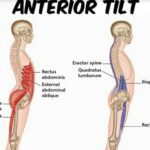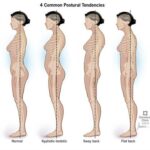Assessing someone’s posture could speak volumes. Proper postural alignment allows for optimal neuromuscular efficiency, which produces effective and safe movement. Good posture ensures the muscles of the body are in proper alignment and that there is proper absorption and distribution of forces throughout the kinetic chain. In other words, joint motion is happening the way it’s meant to, and less stress is being created. In general, when muscle imbalances are present, a certain muscle (or muscles) associated with a joint (or joints) may be in a shortened state while others are in a lengthened state, affecting the position of the joint and over time, create a cycle of injury, compensations and decreased mobility. When range of motion is lacking in certain joints, the body will try and find that range of motion somewhere else. In athletes who depend on core and lower body strength efficiency such as runners, any slight muscular imbalance could potentially lead to gait compensations, performance declinations, and injury later on. Other lifestyle factors to consider with muscular imbalances include past injuries, repetitive movements, extended periods of sitting, and occupational roles.
Though much could be said for assessing the head, neck, and shoulders, many athletes develop more lower body imbalances due to the constant loading and movement patterns required of them. Below are some basic static and dynamic tests that could be administered to detect any common postural distortion patterns including which muscles are either overactive (need to be released/stretched) or underactive (need to be strengthened) . Muscle groups that need to be strengthened should be addressed by the proper professionals such as a physical therapist or corrective exercise specialist, whereas overactive and tight areas will benefit most from frequent massage, stretching and foam rolling.
Static assessment side view
A. Lower Crossed Syndrome- anterior tilt of the pelvis (arched lower back)
- Overactive Muscles: Hip Flexor Complex, Adductor Group (Groin Muscles), Latissimus Dorsi, Erector Spine
- Underactive Muscles: Gluteus Maximus, Gluteus Medius, Transverse Abdominals
B. Proper alignment
Dynamic assessment front view: Overhead Squat
A. Pronation Distortion Syndrome- foot pronation (flat feet) and internally rotated knees (knee valgus)
- Overactive Muscles: Gastrocnemius/Soleus (Calf Muscles), Peroneals, Adductors, TFL, Hip Flexor Complex
- Underactive Muscles: Anterior Tibialis, Posterior Tibialis, Gluteus Maximus, Gluteus Medius
B. Proper alignment
Dynamic assessment side view: Overhead Squat
A. Excessive Forward Lean- tightness in the hip flexors and posterior legs cause weight to be shifted forward
- Overactive Muscles: Gastrocnemius/Soleus (Calf Muscles), Hip Flexor Complex, Abdominals
- Underactive Muscles: Anterior Tibialis, Gluteus Maximus, Erector Spine
B. Proper alignment
Sources:
- http://healthyliving.azcentral.com/overhead-squat-assessment-1264.html
- https://quizlet.com/24289564/nasm-overhead-squat-assessment-excessive-forward-lean-compensation-flash-cards/
- https://www.webexercises.com/2013/03/the-squat-assessment-what-does-it-tell-us.html
- http://goeata.org/protected/EATACD06/downloads/PDF/presentation-miller.pdf
- https://www.humankinetics.com/AcuCustom/Sitename/DAM/090/Jane_Johnson_Postural_Assessment.pdf
- https://runnersconnect.net/poor-posture-and-pain/
- http://pumpsandiron.com/2015/06/08/what-an-overhead-squat-assessment-can-reveal-about-muscle-imbalances-try-it-at-home/
- https://brentbrookbush.com/articles/assessment/introduction-overhead-squat-assessment/
- http://www.thefitnesstraineracademy.org/blog/the-overhead-squat-assessment/
- http://blog.nasm.org/newletter/overactive-versus-underactive-muscles-mean/
This article/video is for educational purposes only; do not attempt without your physician’s clearance. If you are in pain or injured, see your physician.
Copyright © Vidal Sports LLC 2018













